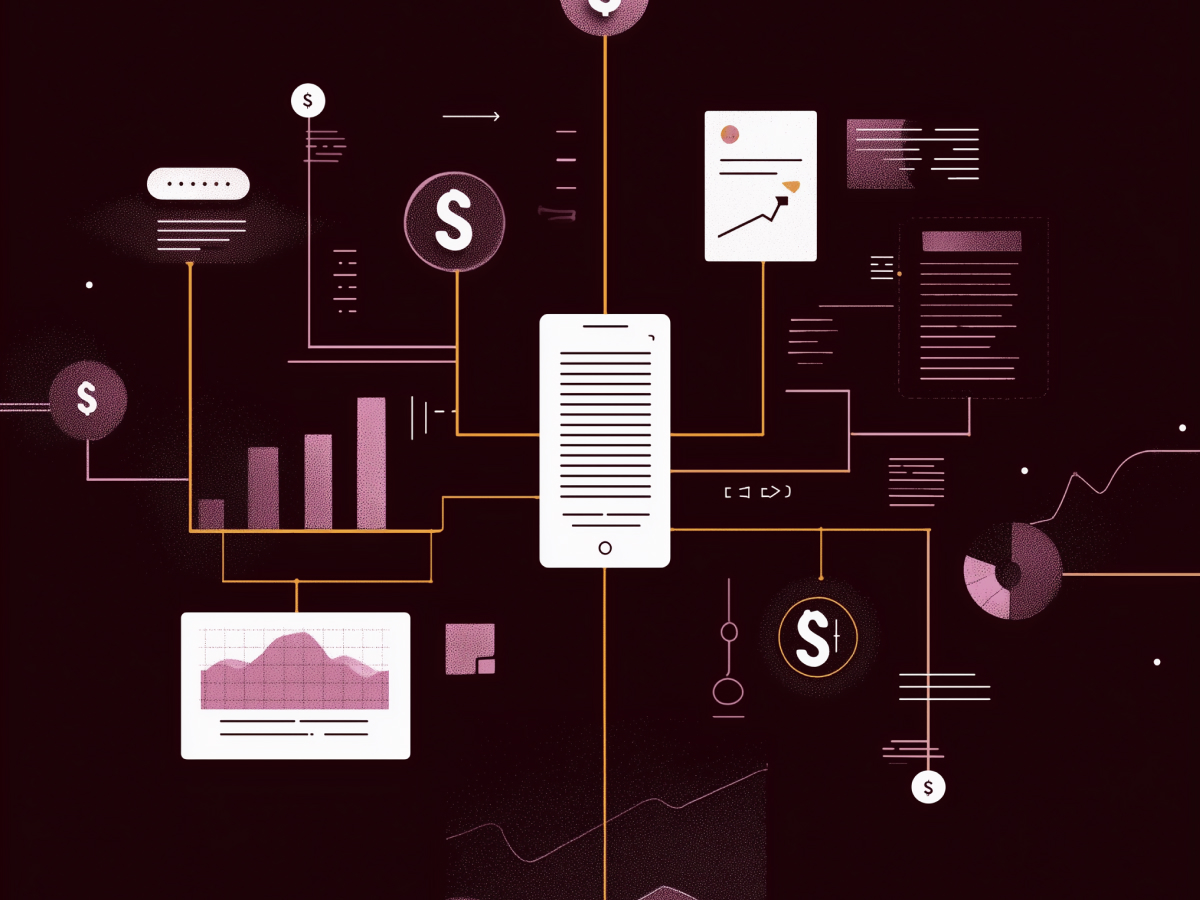Simplicity is critical for maintainable software
Complexity is easy to create and hard to tame. That’s true for code, systems, and organizations. In software, complexity slows down the team, increases cost, and breaks things that shouldn’t break. The solution? Simplicity, built in from day one and maintained over time.
No software system starts out complex. Complexity creeps in through small, undisciplined choices: over-engineering, unnecessary dependencies, too many database tables, disjointed modules. Some complexity is necessary, it comes from the problem we’re solving. But much of it isn’t. That’s where leadership and discipline matter.
You want clear metrics to track complexity. Look at dependency counts. Look at the number of endpoints or modules. If these numbers are rising sharply without corresponding customer impact or technical value, you’ve got problems. Tools like Madge can help visualize how your modules interact. If you can’t easily read your architecture, it’s likely too complicated.
Simplicity also depends on good code practices. When developers encounter convoluted method structures, long conditional blocks, redundant logic, they should break them apart. Clean code enables change. If your teams aren’t treating complexity as an alert, they’re building toward long-term inefficiency and rework.
Maintaining simplicity increases speed, reduces technical debt, and keeps onboard costs down. Over time, it’s the difference between predictable maintenance and expensive recovery operations. You won’t see the upside immediately, but you’ll feel it when things stop breaking under pressure.
Decision-makers should treat simplicity not as a technical preference but as a critical system property. Software that’s complex without cause drains time and slows response to the market.
Daniel Ingalls, one of the pioneers behind Smalltalk, laid out powerful design principles that shape how we think about simplicity in system architecture. They still hold up. That’s good design, timeless and efficient.
Sustainable development enhances long-term code quality
Speed is irrelevant if you’re accelerating in the wrong direction. In software, unsustainable progress creates brittle systems, tech debt, and broken roadmaps. You can’t treat the next release like it’s the endgame. Products evolve, and your codebase must keep up, without falling apart.
Sustainable development is a mindset. It means understanding the trade-offs behind technical decisions. Taking shortcuts is sometimes necessary, it’s part of building at pace. But if you’re not tracking those shortcuts, you’re accumulating risk. And that risk compounds.
The best engineering teams log technical debt as part of normal development work. They tag it, ticket it, and assign owners. Make the debt visible, keep it small, and fix it continuously. Big refactoring projects often fail because they aim too high. Fixing things incrementally is faster, more reliable, and still improves your foundation.
Refactoring doesn’t need executive approval. Developers should be empowered to clean up naming issues, reorganize files, and clarify logic when they spot it. Those actions don’t slow down shipping, they prevent technical slowdown later. That’s the edge your team needs as you scale.
From a leadership standpoint, sustainability equals lower future cost. It ensures your platform teams are building systems with enough flexibility to support next year’s strategy, not just this quarter’s goals.
The long-term value of sustainable engineering is well documented. Michael Feathers, a veteran in legacy software, laid it out clearly. Ward Cunningham, who coined the concept of technical debt, warned about the price of moving fast without design clarity. These aren’t abstract thinkers, they’re practitioners who’ve dealt with real-world consequences at scale.
Every system expands, changes, and eventually needs to adapt to something new. Sustainable software gives you the option to evolve. And in a fast-moving market, having options is everything.
Fast, accurate feedback enhances development agility
Operating without constant feedback leads to poor development decisions. In software, you need rapid, clear signals to understand whether changes are working, across unit tests, integration pipelines, or product behavior. The faster the loop, the faster you adapt. And speed gives you a serious strategic advantage.
Test-driven development (TDD) exists for this reason. It encourages developers to test early, test often, and test with precision. But just having tests isn’t enough. You need tests that run fast, return accurate results, and are trusted by your team. If they’re slow or break for no reason (what developers call “flaky” tests), they’ll get ignored. Then you’re left guessing.
Keep an eye on test performance. Identify your top ten slowest or least reliable tests. Fix them. Rankings can help prioritize. Modern development tools offer this kind of telemetry, so you don’t have to guess where the bottlenecks are. Assertive tests matter too, assertions should offer real insight when something breaks, not just say “failed.”
Beyond tests, your integration process has to be continuous, not periodic. Integration isn’t just about merging codes into a trunk branch, it’s about confirming compatibility, identifying regressions, and reducing cycle time. Make trunk changes part of your working rhythm, not something to “get around to.” This keeps the product in a stable, deployable state.
This isn’t new thinking. Kent Beck, who introduced Extreme Programming in the late ’90s, emphasized continuous integration as a foundation for software agility. Done right, it lets teams move without hesitation and catch issues before they scale into big costs.
Leaders should ask: how continuous is our integration, really? If you’re seeing delays, long build times, or post-release regressions, your feedback loops aren’t tight enough. Speed without reliability turns into debt. Fast and accurate feedback is what makes true agility sustainable.
Human-Centric development cultivates better collaboration
Software isn’t created in a vacuum. It comes from people, writing code, reviewing code, solving real problems together. You can’t drive meaningful product innovation without understanding the human side of your development process. Technical strength matters, but collaboration keeps velocity from breaking down under pressure.
Start with empathy, especially during processes like code review. This isn’t about being soft, it’s about being intelligent. Criticizing code harshly or assuming everyone knows what you know weakens your team. It slows knowledge transfer and builds a culture of defensiveness. Treating every developer as a valued contributor moves teams faster and builds trust that lasts.
Knowledge sharing needs deliberate space. Pair programming, even in short bursts, helps cross-skill the team. Design sessions, where engineers tackle a problem collectively before any code is written, align thinking early and reduce wasted rework later. And dedicated learning time, focused on architecture discussions or new tools, adds depth to the team’s skill set.
Most teams suffer from undocumented decisions. That creates confusion down the line. Architectural Decision Records (ADRs) solve this. They keep a written history of “why we did it this way,” close to the code. Not buried in email. Not forgotten when people leave.
For executives, the operational outcome is clearer than ever: better communication accelerates delivery. Silos slow decision-making and increase dependencies. Human-centric teams move better, innovate more frequently, and recover faster when something breaks.
Julia Evans, a respected software engineer and technical writer, emphasizes this kind of communication-first philosophy, particularly in how we teach and share technical knowledge. Her advice on avoiding “feigned surprise” contributes meaningfully to psychological safety inside complex teams.
What matters most? A high-performing engineering team that listens, documents, and improves together. You need that if you’re scaling. It’s not optional, it’s foundational.
Established principles and habits drive professional growth and healthy teams
Clear principles and consistent habits are what separate high-functioning teams from reactive ones. When a team knows what it stands for, technically and culturally, its decision-making becomes aligned, and its execution improves. These principles don’t need to be complex. They just need to be real, shared, and reinforced through action.
Habits shape the day-to-day behavior of every engineer. If those habits are reactive, disconnected, or inconsistent, quality drops and friction rises. But when habits are rooted in well-defined principles, teams move cohesively toward outcomes that matter. This applies equally to how problems are solved, how code is reviewed, and how architectural trade-offs are made.
Define your principles as a team. Write them down. Revisit them when your structure shifts. Having them hidden in someone’s head doesn’t help at scale. When principles are accessible and visible, they influence daily decisions, without needing constant top-down reinforcement. Alignment becomes embedded in the team’s rhythm.
Habits need attention, too. Review which ones work. Drop the ones that slow you down. If you’re improving habits in small iterations, that shift compounds. It doesn’t have to be disruptive. What you optimize now impacts everything that comes later, deployment efficiency, developer satisfaction, and technical clarity.
The executive view is straightforward: companies that invest in culture and technical alignment outperform companies that don’t. If your principles are vague, or your engineering habits feel random, you’ll see it reflected in slower delivery and inconsistent product quality. But if you get this right, engineering becomes a force multiplier.
This is not about copying other teams or chasing trends. It’s about defining what works for your environment and sticking to it. That’s how engineering leaders drive scalable, predictable progress, one clear principle and one durable habit at a time.
Key highlights
- Simplicity drives maintainability: Leaders should enforce simplicity in architecture and codebase by tracking complexity metrics and supporting tools that offer visibility, improving long-term agility and reducing maintenance drag.
- Sustainable practices prevent future cost: Establish a routine for logging and addressing technical debt in small, manageable increments to prevent system rot and reduce the risk of expensive overhauls later.
- Fast feedback fuels development speed: Invest in high-quality testing and continuous integration practices to ensure rapid feedback loops, enabling faster releases and quicker problem resolution.
- Human-centered teams perform better: Prioritize empathetic engineering culture, shared knowledge practices, and architectural documentation to build cohesive, scalable teams that adapt better to change.
- Clear principles shape consistent results: Align your teams around well-defined engineering principles and healthy habits to foster predictability, resilience, and higher quality output across software initiatives.





